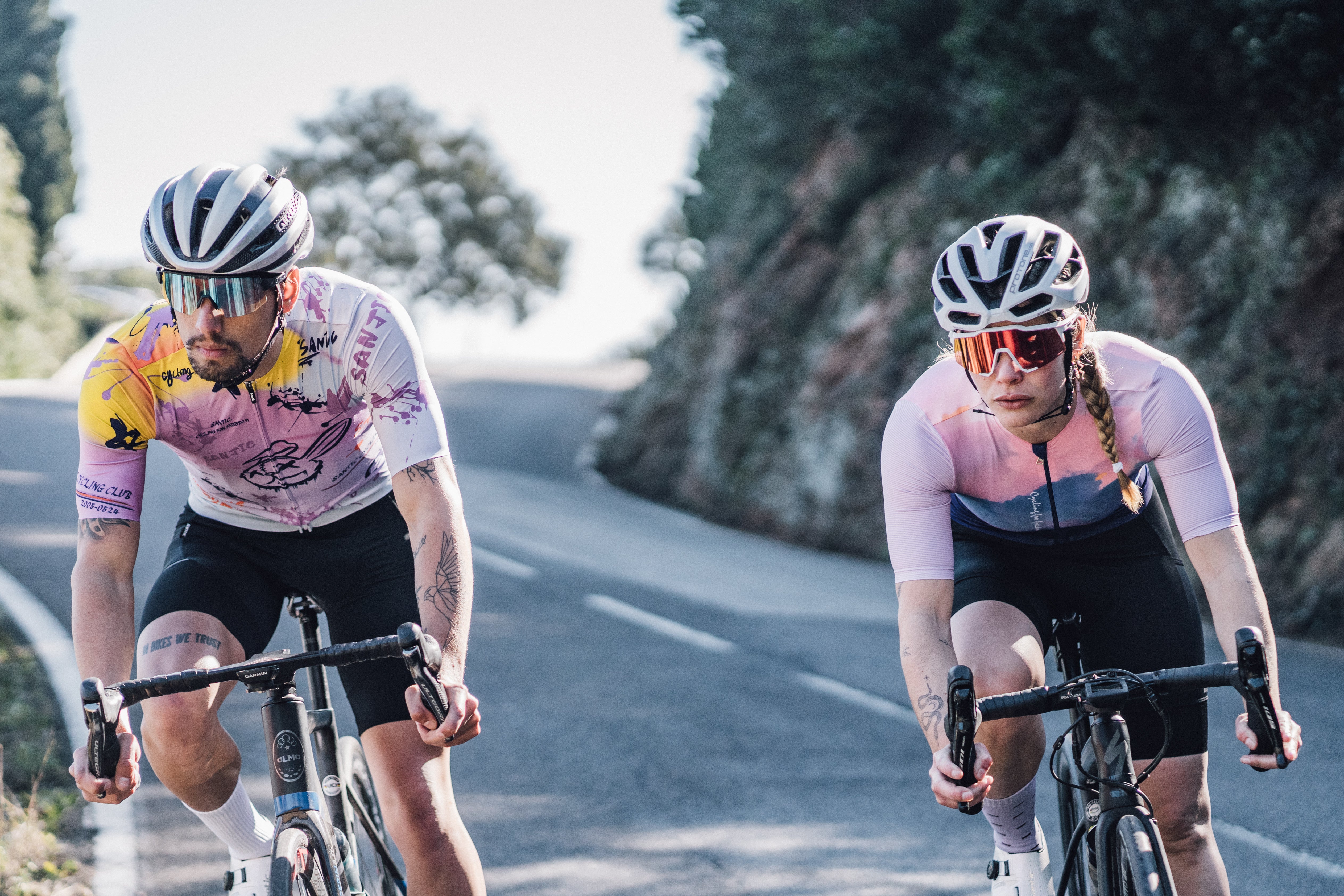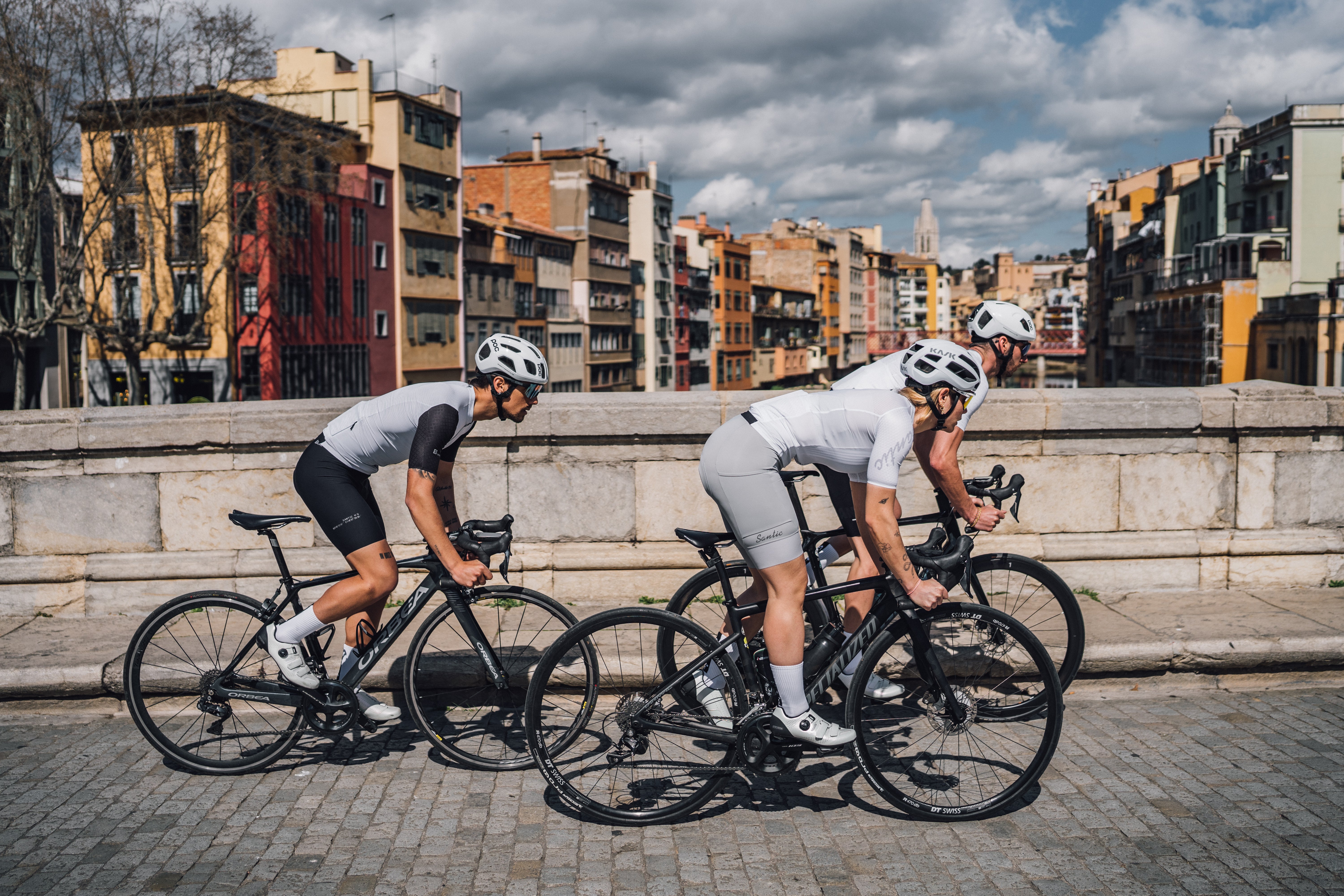Women and Cycling: Your Go-To Guide
Women have pushed pedals to pave new paths for generations, from suffragettes to professional racers. Yet cycling's feminist history often goes untold. This guide will illuminate those hidden stories while equipping modern women to carry the wheels of change.
Looking to the present day, we will showcase the diverse women breathing new life into cycling culture, from fixie queens to enduro chicks. Expert advice will assist you with curating the perfect cycling kit. By the end, we hope you get inspired to join the sisterhood of the saddle.
The Feminist History of Bicycles
The bicycle has been a vehicle for women's liberation since its inception. When bikes became popular in the late 1800s, they granted women unprecedented freedom of mobility and challenged restrictive Victorian gender norms. However, cycling's path to becoming an acceptable pastime for women was not easy.
Here are various aspects you need to know about the feminist history of bicycles.
1. Health and sexual threat
At first, conservatives decried bicycles as a dangerous threat to femininity and morality. Doctors claimed cycling could harm women's reproductive health or even cause insanity. Dress codes also discouraged women from riding by requiring impractical, heavy skirts.
Yet early adventurous female cyclists boldly rebelled, adopting rational sporty attire with bloomers that showed their ankles. These rebellious women paved the way for bikes to become symbols of women's independence.
2. Rise of Female Bike Pioneers
Suffragettes capitalized on cycling's liberating power by using bikes to spread their message. Frances Willard, a leading suffragette, wrote a book proclaiming the bicycle had "done more to emancipate women than any one thing in the world."
Cycling granted mobility and freedom to take their cause on the road. During an 1896 bike parade led by Susan B. Anthony, suffragettes rode to the Republican National Convention demanding the vote.
3. Women in cycling competition
As the bicycle gained acceptance, the first female cycling clubs emerged. They provided camaraderie and independence for female riders excluded from male clubs. But when women sought to join races, they faced barriers. Officials claimed women were too fragile to compete. In the 1890s, Annie Londonderry became the first woman to ride around the world to prove women cyclists were tough enough for any challenge.
Gradually, cycling became more inclusive. By the 1900s, women were competing in endurance and track racing. Still, outdated attitudes persisted. The Olympics included women's cycling events in the 1980s. Even today, pay inequity, lack of media coverage, and ongoing stereotypes continue to create disparities between female and male professional cyclists.
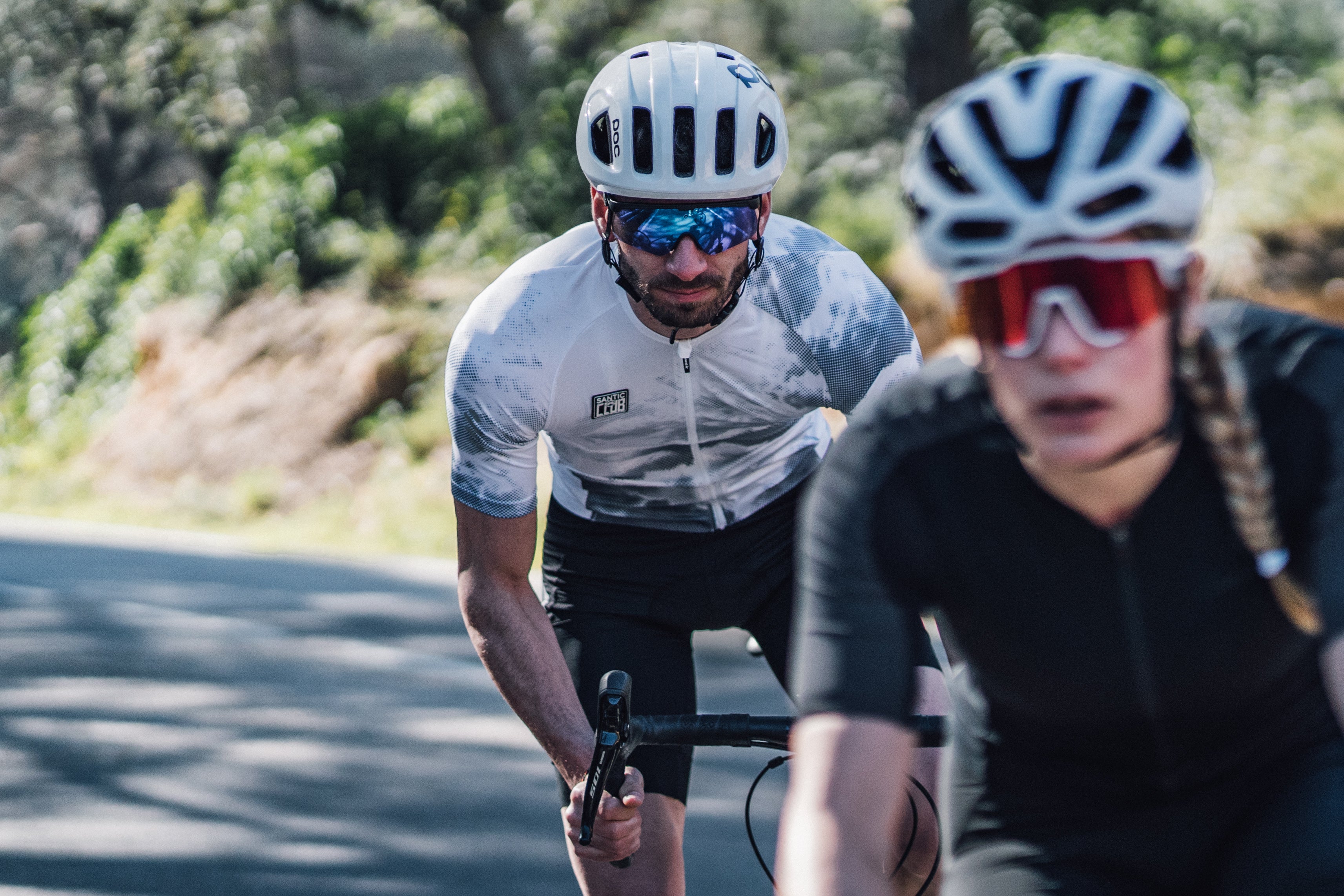
4. Gender disparity
While road racing remains male-dominated, mountain biking has made more strides toward gender balance. Mountain biking culture encourages fun over competition, welcoming riders of all levels.
Groups like the International Mountain Bicycling Association's Women's Initiative seek to grow female participation. Downhill racing has also seen the rise of champions like Rachel Atherton, proving women can master the most challenging trails.
From women's rights activists to professional racers, generations of courageous women have pushed pedals and boundaries, using cycling to achieve larger goals of freedom, strength, and equality. Though inequality persists, their pioneering spirit lives on in every woman who rides a bike.
Women Cycling Kit Buying Guide
A proper cycling kit tailored to female anatomy can make every ride more comfortable and enjoyable. When shopping for women's cycling apparel and gear, follow this guide to find items designed with your needs in mind.
1. Fabric
One of the most critical factors in any cycling kit is the fabric. Material directly impacts the kit's performance in moisture management, temperature regulation, compression, and abrasion resistance. For tops, look for fabrics marketed as technical or performance wear.
Synthetic materials like polyester or nylon wick moisture away from the skin and dry quickly to keep you cool. Natural fibers like merino wool also regulate temperature well. Seamless construction using flatlock or overlay stitches prevents chafing.
With bottoms, padding is crucial. Shorts and tights should have a high-quality chamois pad with multi-density foam and smooth seams to prevent irritation. The pad should fit snugly against the body without bunching or moving. New antibacterial treatments reduce odor retention in pad materials.
Outer layers need weather protection. Windproof fabrics like nylon or polyurethane-coated nylons provide insulation. Durable water repellent (DWR) treatments or membranes help shed rainfall while remaining breathable. Four-way stretch materials allow a full range of motion.
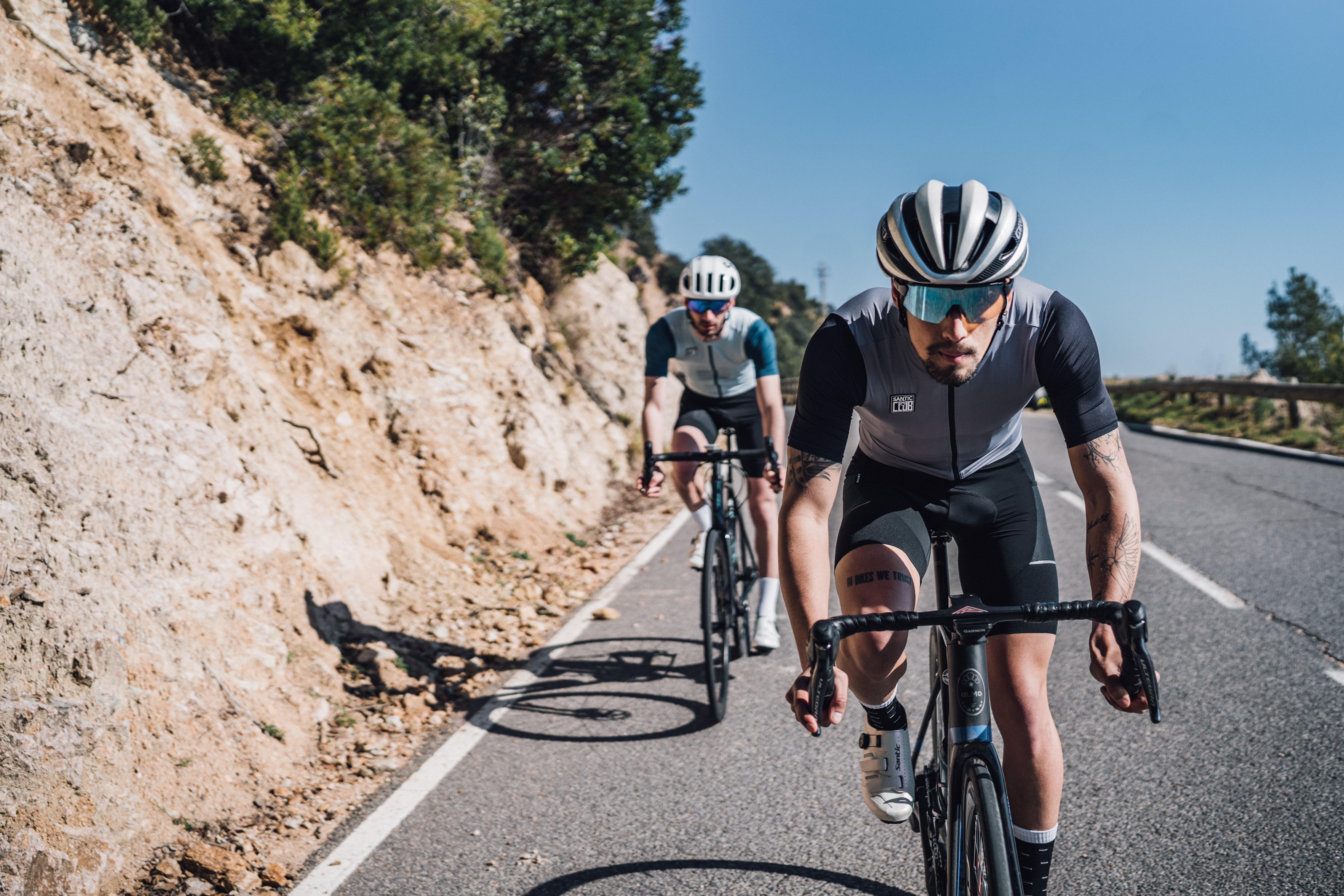
Fit
Fit is crucial to get right when buying cycling apparel. Tops should fit snugly to avoid flapping in the wind and to wick moisture properly. However, excessively tight fits constrict movement - check arm mobility when trying on jerseys. Seek jerseys with shorter front hems, dropped rear hems for coverage, and grippers to keep the jersey in place.
With bottoms, a compressive fit is desirable to enhance muscle support and blood circulation. But too tight of a fit leads to discomfort. Look for shorts and tights with stretch fabrics and flat seams that move smoothly with your body. The chamois pad should fit snugly against the skin - bunching can cause chafing. Carefully select the right inseam length to suit your comfort needs.
Getting the proper fit dialed in takes trial and error, but it is worth the effort. Well-fitted cycling kits tailored to women's proportions can significantly improve comfort over long rides. Take body measurements and read size charts carefully when shopping online. Seek brands that offer multiple cuts to suit different body shapes.
VISIBILITY
Standing out on the road is crucial for any cyclist's safety. Opt for bright colors and bold patterns to enhance visibility. Tops should incorporate reflective details on the back pockets, sleeves, and hem. Add reflective ankle bands, vests, or jackets to define your silhouette if wearing darker colors.
Some cyclists prefer high-visibility neon yellows and greens. While bright, some studies suggest these blend into the surroundings when illuminated in drivers' peripheral vision. Brighter does not necessarily mean more visible. Instead, creating definition and contrast works better. Use color blocking, patterns, or accents to make a distinction.
Daytime lights on both front and rear help you stand out at intersections. At night, outfit your bike with bright headlights and flashing rear lights. Reflective detailing doubles down on nighttime visibility when illuminated by headlights. Dressing for visibility protects you on every ride.
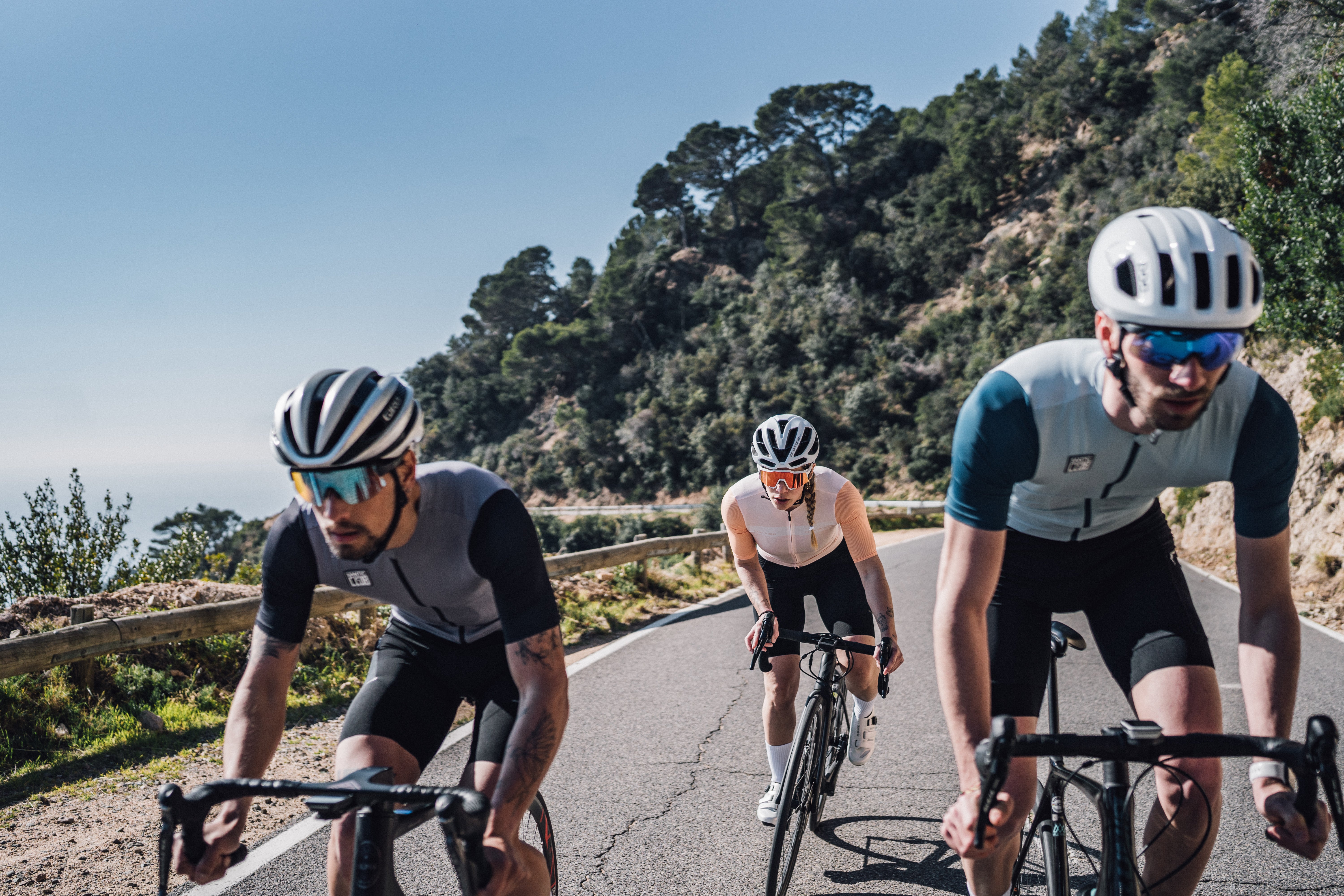
Top 3 American Women Taking Cycling by Storm
Saddle up for an inspirational ride celebrating the trailblazing women diversifying and energizing American cycling.
1. Chloé Dygert
Chloé Dygert is a fierce time trial phenom that generates unmatchable power throughout a race against the clock. Her focused riding style allows no distraction from her singular goal, demolishing the course record. When Dygert sets her sights on a time trial win, competitors are left choking on her dust.
2. Ruth Winder
Ruth Winder has established herself as one of the toughest women's professional road cycling climbers. She attacks ascents with ferocity, daring rivals to dig as deep as she does. Winder's resilience when the road tilts skyward proves she has the legs and mental toughness to conquer the most demanding mountain terrain.
3. Megan Jastrab
Megan Jastrab is a young phenom possessing untapped potential. Her ability to calculate opportunities to outmaneuver and outsprint older, experienced racers shows tremendous maturity. Given her early career successes, Jastrab is undoubtedly a rising star who will shine for many years.
FAQ
Here is a unique 5-question FAQ related to women and cycling.
1. How did bicycles help advance women's rights historically?
In the late 1800s, early bicycles granted women unprecedented freedom of mobility. Cycling challenged restrictive Victorian gender norms about femininity. Suffragettes also used bikes to spread their message and rally for the right to vote.
2. What cycling activities are most popular among women today?
While many women enjoy recreational road cycling, mountain biking, and backpacking, they have seen massive growth among female participants. The community and adventure appeal to many women. Cruiser rides and urban cycling are also famous for group bonding and practical transportation.
3. What barriers do women still face around cycling?
Inequality, harassment, lack of media representation, and discouraging gender stereotypes persist. However, advocacy groups are working to promote inclusion and visibility. Brands catering specifically to women are also empowering female cyclists.
4. How can cycling benefit women's health?
Cycling provides cardiovascular exercise to boost heart health. The low-impact activity also improves muscle tone and strength in the legs, core, and glutes. Cycling outside immerses you in nature for mental health benefits as well. It's a liberating activity.
5. What tips do you have for women new to cycling?
Start slow on trails or quiet roads. Join group rides or clinics to meet mentors. Invest in a properly fitted bike and gear made for women. Stay visible and use lights. Apps help you find routes. Most importantly, have fun, and don't be intimidated! Cycling sisterhoods welcome new members.
Conclusion
Generations of bold women have advanced cycling culture and carved new paths to equality. The bicycle remains a vehicle of empowerment and joy. Women continue pioneering the sport and diversifying its narrative. They continue gripping handlebars, pushing pedals, and rolling ahead as inspirations. All riders can appreciate these influential women who cycle for liberation, adventure, and sheer love of the ride. Their wheels lead us all onward.
Related Articles
【Best Bike Tool Kits】
https://santic.com/blogs/extra/best-bike-tool-kits
【Enjoyment In Cycling】
https://santic.com/blogs/extra/enjoy-cycling-sport
